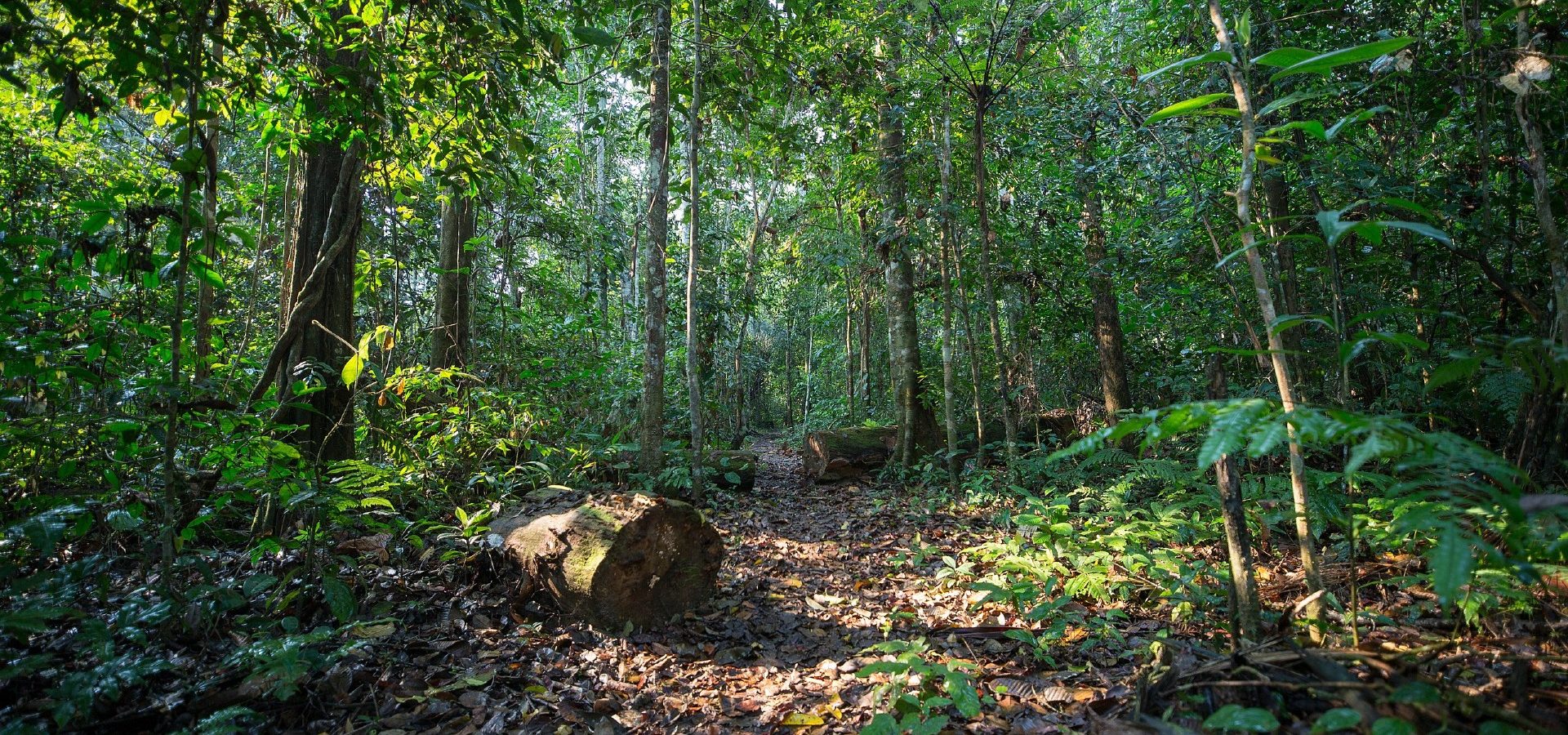All life on Earth is connected by the evolutionary tree of life (also known as the phylogenetic tree). Millions of years of evolution gave birth to a diversity of life and this biological diversity is what keeps the balance in any given ecosystem. Biological diversity is the phrase from which originates the portmanteau biodiversity, which is a fairly new term coined in the early 1980s. Today, this word has become more widespread and taken far greater significance in the conservation discourse. If global warming and climate change are one side of the coin, then biodiversity loss is irrefutably the other side.
According to the estimates of conservation biologists and scientists, today, species are going extinct at the fastest rate since the Cretaceous extinction of the dinosaurs. That is why protecting biodiversity has to be in the national action plan of each and every country – be it through the creation of marine protected areas or by recognising biodiversity hotspots.
Biodiversity hotspot – explained
Even though the entire planet has a vast array of life forms, they are not evenly distributed. Usually, there is an increase in biodiversity as we move from the poles to the tropics. These are mainly due to meteorological factors such as precipitation and weather. Hence regions at lower latitudes have more biodiversity than those at higher latitudes. This is known as latitudinal gradient in species diversity. In this context, a biodiversity hotspot is a region which has a high level of endemism (species which aren’t found anywhere else). To qualify as a biodiversity hotspot a region must meet two strict criteria: 1) the area must have a considerable number of endemic species. In other words, a hotspot is irreplaceable. 2) It should have 30% or less of its original natural vegetation left, i.e it must be threatened.
Today, there are 36 biodiversity hotspots across the planet. Together they account for only 2.5% of Earth’s land surface but harbour more than half of the world’s plant species as endemics, and 43% endemism for bird, reptile, amphibian and mammal species.
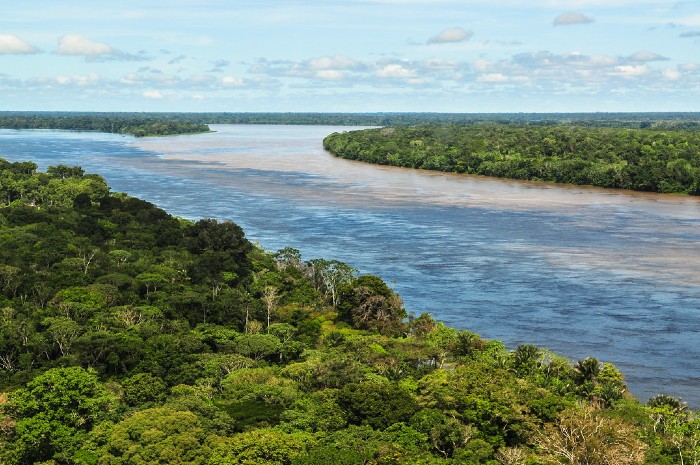
There are many biodiversity hotspots across the world. Country-wise, Brazil and Colombia – home to the primordial Amazon – have magnificent biodiversity. In fact Colombia has the largest number of endemics of any country on Earth. So much so that a whopping 10% of the species found on the planet are in Colombia. The country has more than 1,900 bird species – more than Europe and North America combined – 10% of the world’s mammal species and 14% of the world’s amphibian species. Here we can clearly see the effect of latitudinal gradients since Colombia is situated closer to the tropics.
Hotspots in India
India as a country is also blessed with flourishing biodiversity. India is known to have nine major terrestrial biome subtypes (you can read our article on biomes here). Given the varying climate and weather pattern found in the Indian subcontinent, it is not difficult to guess that India too has a diversity of biomes. These include some of the richest evergreen, old growth forests dating back to antiquity.
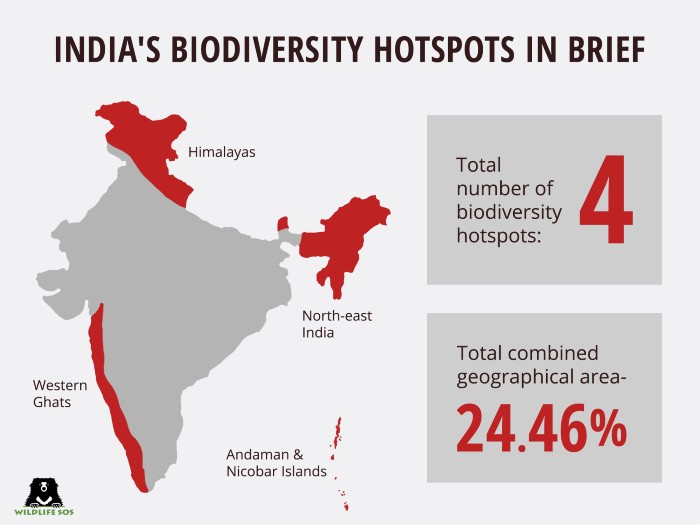
Rainforests cover an estimated less than 6% of Earth’s land surface, and scientists believe that more than half of all the world’s plant and animal species live in this ecosystem. Hence it is no surprise that three out of the four biodiversity hotspots existing in India are rainforests, namely Western Ghats, Andaman and Nicobar archipelago, and North-East India. The Himalayas is the fourth and final one.
The high altitudes of the Himalayas harbour some of the grittiest animals such as the snow leopard, Asiatic Ibex, blue sheep (also called bharal), Argali (a wild sheep) etc. Whereas, in the alpine and sub-alpine meadows, one can find large mammals like Himalayan brown bears and Asiatic black bears. On the other hand, the state of Sikkim in eastern Himalaya is blessed with a rich treasure trove of 5,000 plant species. Among them are over 550 species of orchids, 11 oak species and 28 bamboo species.
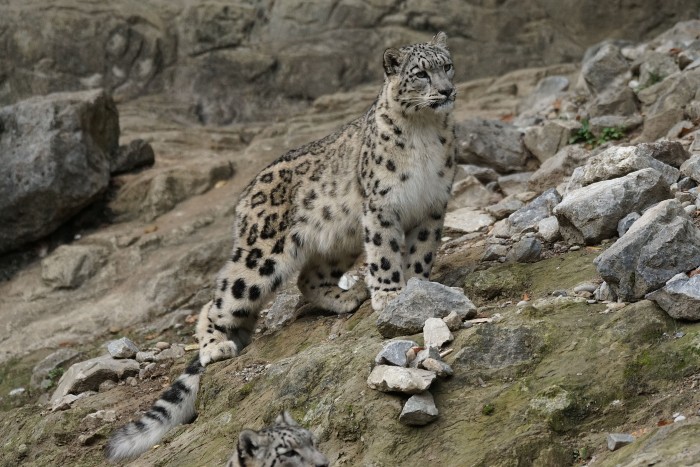
Coming to down to the peninsular ridge of India, the tropical montane rainforests in the Western Ghats are teeming with life, with big cats such as tigers, leopards and black panthers, and primates such as the arboreal lion-tailed macaques. But Western Ghats is mostly known for its high endemism of amphibian and plant species. A mind-blowing 87% of all frogs found here are endemic including the Purple frog, the Malabar Gliding frog and the Coorg Yellow bush frog. The plants include Cynometra beddomei, Hopea ponga, Atuna travancoria, Vateria indica and Calophylum apetalum, to name a few.
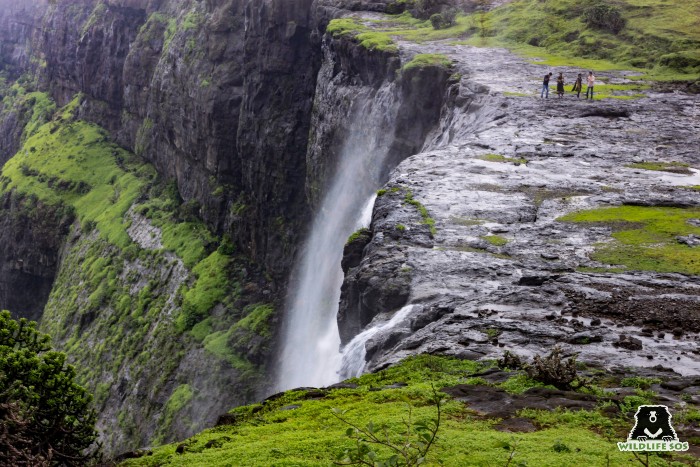
The discovery of the Arunachal macaque from the Eaglenest Wildlife Sanctuary and the elusive Bugun liochicla bird already give us an idea about the rare biodiversity present in north-east India. Three new cicada species have also been discovered in 2021 from this hotspot, which are telltale signs that so much is left to be uncovered from this magical, unexplored wonderland.
In the south-eastern most part, on the Bay of Bengal, lies the Andaman and Nicobar archipelago which is the fourth biodiversity hotspot of India. With different kinds of vegetation such as tropical rainforests and mangrove forests, this area is home to many a species. The island ecosystem has allowed life to evolve in isolation, which is especially visible in its list of endemic birds. Narcondam Hornbill, Andaman serpent eagle, Andaman drongo, Nicobar megapode, Nicobar sparrowhawk and Nicobar scops-owl are some of the famous endemic birds found here.
Biodiversity hotspots are thus immensely important in the fight against climate change. Protecting and preserving these regions are even more important today because of their threatened nature. Losing them would not only mean a total loss of ecosystems but also extinction of species which keep the balance of these ecosystems intact. It is time to cherish these national treasures before time runs out.

